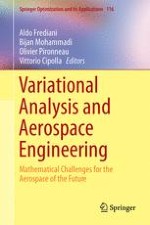This book presents papers surrounding the extensive discussions that took place from the ‘Variational Analysis and Aerospace Engineering’ workshop held at the Ettore Majorana Foundation and Centre for Scientific Culture in 2015. Contributions to this volume focus on advanced mathematical methods in aerospace engineering and industrial engineering such as computational fluid dynamics methods, optimization methods in aerodynamics, optimum controls, dynamic systems, the theory of structures, space missions, flight mechanics, control theory, algebraic geometry for CAD applications, and variational methods and applications. Advanced graduate students, researchers, and professionals in mathematics and engineering will find this volume useful as it illustrates current collaborative research projects in applied mathematics and aerospace engineering.
